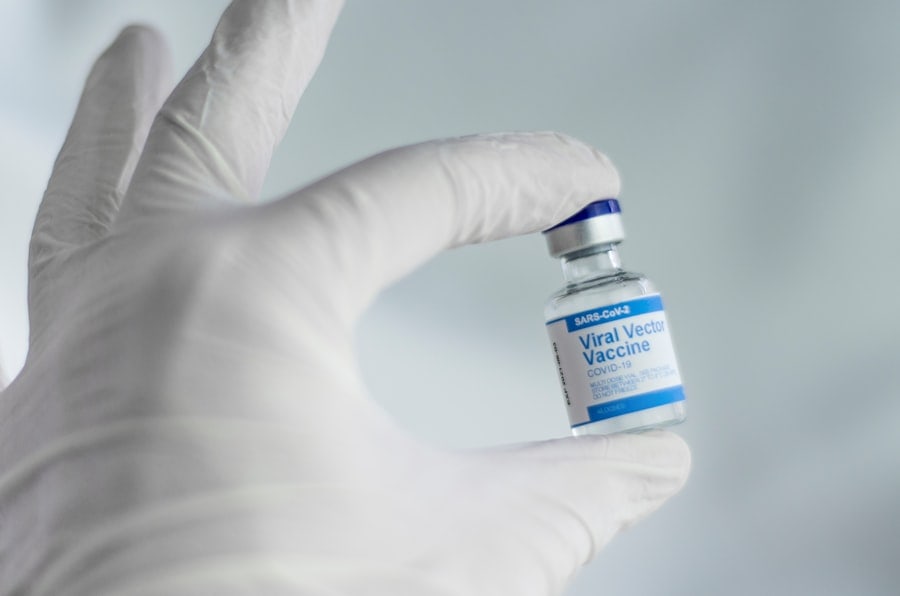Diagnostics and imaging are essential components of modern healthcare, enabling accurate diagnosis and monitoring of various medical conditions. Advanced technologies like MRI, CT scans, and ultrasound have transformed disease visualization and diagnosis, providing detailed images of internal body structures. These tools facilitate early detection and precise diagnosis of numerous medical issues.
Additionally, improvements in diagnostic methods such as blood tests and genetic testing have enhanced disease diagnosis accuracy and efficiency. The integration of artificial intelligence (AI) and machine learning into diagnostic imaging has significantly improved the speed and accuracy of medical image interpretation. AI-powered tools can analyze vast quantities of medical images much faster than human radiologists, expediting diagnosis and treatment planning.
These technological advancements have not only enhanced the diagnostic process but also led to more personalized and targeted treatment strategies for patients. However, the widespread use of diagnostic and imaging technologies has raised concerns about patient privacy and data security. As these technologies generate substantial amounts of sensitive patient information, healthcare organizations must implement robust security measures to protect patient data from unauthorized access or breaches.
Healthcare professionals must also ensure patients are fully informed about the risks and benefits of diagnostic imaging procedures and their rights regarding the use and storage of their medical data. Continuous development and integration of advanced diagnostic and imaging technologies have significantly improved patient outcomes and paved the way for more precise and effective healthcare interventions. By addressing privacy and security concerns, healthcare providers can continue to leverage these powerful tools while safeguarding patient confidentiality.
Key Takeaways
- Diagnostics and imaging technologies are advancing rapidly, allowing for more accurate and efficient diagnosis of medical conditions.
- Drug discovery and development processes are being revolutionized by new technologies, leading to faster and more targeted treatments for various diseases.
- Personalized treatment plans are becoming more common, as healthcare providers utilize genetic and other patient-specific data to tailor therapies to individual needs.
- Predictive analytics are being used to forecast patient outcomes and identify potential health issues before they arise, leading to more proactive and effective care.
- Administrative efficiency and workflow optimization tools are streamlining healthcare operations, reducing costs and improving overall patient care experiences.
- Remote monitoring and telemedicine technologies are enabling healthcare providers to monitor and treat patients from a distance, increasing access to care and improving patient outcomes.
- Patient engagement and education tools are empowering individuals to take a more active role in their healthcare, leading to better adherence to treatment plans and improved overall health.
Drug Discovery and Development
Revolutionizing the Drug Discovery Process
High-throughput screening techniques, combinatorial chemistry, and computer-aided drug design are just a few examples of how technology has revolutionized the drug discovery process. These tools allow researchers to rapidly screen large libraries of compounds, design new drug molecules, and predict their potential efficacy, ultimately expediting the identification of promising drug candidates.
Big Data Analytics and Bioinformatics
Moreover, the use of big data analytics and bioinformatics has enabled researchers to analyze vast amounts of biological and chemical data, leading to the identification of novel drug targets and biomarkers. This approach has not only facilitated the discovery of new drugs but has also paved the way for personalized medicine, where treatments are tailored to individual patients based on their genetic makeup and specific disease characteristics.
Gene Editing and Emerging Technologies
Additionally, advancements in gene editing technologies such as CRISPR have opened up new possibilities for targeted drug development, allowing for the precise modification of genes associated with various diseases. Despite these advancements, drug discovery and development still face challenges such as high costs, regulatory hurdles, and ethical considerations. The high failure rate of drug candidates in clinical trials remains a significant challenge for pharmaceutical companies, highlighting the need for continued innovation in drug development processes.
Personalized Treatment Plans

Personalized treatment plans have emerged as a game-changer in modern healthcare, allowing healthcare providers to tailor medical interventions to individual patients based on their unique genetic makeup, lifestyle factors, and disease characteristics. This approach represents a shift away from traditional one-size-fits-all treatment strategies towards more targeted and effective healthcare interventions. Advances in genomics, proteomics, and other omics technologies have enabled healthcare professionals to gain deeper insights into the molecular mechanisms underlying diseases, leading to the identification of specific biomarkers that can inform personalized treatment decisions.
Furthermore, the integration of electronic health records (EHRs) and clinical decision support systems has facilitated the implementation of personalized treatment plans by providing healthcare providers with comprehensive patient data and evidence-based treatment recommendations. These tools enable healthcare professionals to make informed decisions about treatment options, medication dosages, and follow-up care based on each patient’s unique health profile. Additionally, telemedicine and remote monitoring technologies have expanded access to personalized care by allowing patients to receive ongoing support and guidance from healthcare providers without the need for frequent in-person visits.
Despite the potential benefits of personalized treatment plans, challenges such as data privacy concerns, interoperability issues, and resource constraints continue to impact their widespread adoption. Healthcare organizations must prioritize data security measures to protect sensitive patient information while ensuring that EHR systems are interoperable across different care settings. Moreover, efforts to address healthcare disparities and improve access to personalized care for underserved populations are essential for achieving equitable healthcare outcomes.
By addressing these challenges and leveraging technological advancements, personalized treatment plans have the potential to revolutionize healthcare delivery by improving patient outcomes and enhancing the overall quality of care.
Predictive Analytics for Patient Outcomes
Predictive analytics has emerged as a powerful tool in healthcare, allowing providers to forecast patient outcomes, identify at-risk individuals, and optimize care delivery. By leveraging large datasets and machine learning algorithms, predictive analytics can help healthcare professionals anticipate potential health complications, optimize treatment plans, and allocate resources more effectively. These insights enable providers to intervene proactively, ultimately leading to improved patient outcomes and reduced healthcare costs.
Furthermore, predictive analytics can be used to identify patterns and trends in patient data that may not be apparent through traditional methods of analysis. By analyzing historical data from electronic health records, medical imaging studies, and wearable devices, healthcare providers can gain valuable insights into disease progression, treatment response, and patient adherence to care plans. This information can inform personalized interventions tailored to each patient’s unique needs, ultimately leading to more effective healthcare delivery.
However, the widespread adoption of predictive analytics in healthcare is not without challenges. Data quality issues, privacy concerns, and regulatory compliance requirements must be carefully addressed to ensure that patient information is used responsibly and ethically. Additionally, healthcare organizations must invest in robust infrastructure and training programs to support the implementation of predictive analytics tools effectively.
By addressing these challenges and leveraging the power of predictive analytics, healthcare providers can harness the full potential of data-driven insights to improve patient outcomes and enhance the overall quality of care.
Administrative Efficiency and Workflow Optimization
Administrative efficiency and workflow optimization are critical components of delivering high-quality healthcare while managing costs effectively. Technology plays a pivotal role in streamlining administrative processes, reducing paperwork burdens, and improving overall operational efficiency within healthcare organizations. Electronic health record (EHR) systems have revolutionized how patient information is managed, allowing for seamless documentation, information sharing, and coordination of care across different providers and care settings.
Moreover, advancements in artificial intelligence (AI) and robotic process automation (RPA) have automated routine administrative tasks such as appointment scheduling, billing processes, and claims management. These technologies not only reduce administrative burdens on healthcare staff but also minimize errors and delays in processing essential tasks. Additionally, telehealth platforms have expanded access to care by enabling virtual consultations, remote monitoring, and electronic prescription management, ultimately improving patient engagement while optimizing provider workflows.
Despite these advancements, challenges such as interoperability issues between different EHR systems, cybersecurity threats, and workforce training gaps continue to impact administrative efficiency within healthcare organizations. Efforts to standardize data exchange protocols, enhance cybersecurity measures, and provide ongoing training for staff are essential for overcoming these challenges. By addressing these obstacles and leveraging technology effectively, healthcare organizations can optimize administrative workflows while delivering high-quality care in a cost-effective manner.
Remote Monitoring and Telemedicine

Enhanced Access to Care
These technologies utilize remote monitoring devices such as wearable sensors, mobile apps, and telehealth platforms to track vital signs, medication adherence, and disease progression in real-time. This approach not only improves access to care for patients in remote or underserved areas but also allows for early intervention in managing chronic conditions or post-operative recovery.
Virtual Consultations and Expanded Services
Telemedicine platforms facilitate virtual consultations between patients and healthcare providers, enabling timely assessments, follow-up care, and medication management without the need for in-person visits. This approach has proven particularly valuable during public health crises such as the COVID-19 pandemic when physical distancing measures limited traditional healthcare delivery methods. Additionally, telemedicine has expanded access to specialty care services such as mental health counseling or dermatology consultations for patients who may face barriers to accessing these services locally.
Overcoming Challenges
However, challenges such as reimbursement policies, licensure requirements across state lines, and digital health literacy among patients continue to impact the widespread adoption of remote monitoring and telemedicine. Efforts to address these challenges through policy reforms, provider training programs, and patient education initiatives are essential for realizing the full potential of remote monitoring and telemedicine in improving access to care while enhancing patient outcomes.
Patient Engagement and Education
Patient engagement and education are essential components of delivering high-quality healthcare while promoting active participation in disease management and prevention. Technology has played a pivotal role in empowering patients with access to health information, self-management tools, and interactive educational resources that promote informed decision-making about their health. Patient portals integrated with electronic health record (EHR) systems allow individuals to access their medical records, schedule appointments, request prescription refills, or communicate securely with their healthcare providers.
Moreover, mobile health apps provide patients with tools for tracking their symptoms, monitoring medication adherence, or accessing educational content related to their specific health conditions. These apps not only promote self-care but also facilitate ongoing communication between patients and their care teams through secure messaging or telehealth features. Additionally, virtual support groups or online communities enable patients with similar health concerns to connect with one another while sharing experiences or seeking peer support.
Despite these advancements, challenges such as health literacy disparities among different patient populations or concerns about data privacy must be carefully addressed when implementing technology-driven patient engagement strategies. Efforts to develop culturally sensitive educational materials, provide language interpretation services, or ensure that patient data is protected from unauthorized access are essential for promoting equitable patient engagement across diverse communities. By addressing these challenges through thoughtful design and implementation of technology-driven patient engagement solutions, healthcare organizations can empower individuals to take an active role in managing their health while promoting positive health outcomes.
AI has been making significant strides in enhancing healthcare in various ways, from improving diagnostics to personalized treatment plans. One related article that delves deeper into the impact of AI on the healthcare industry is “Metaverse and Industries: Healthcare and Wellness” which explores how virtual reality and AI are revolutionizing the way healthcare is delivered and experienced. The article discusses the potential economic and social impacts of integrating AI and metaverse technologies into the healthcare sector, shedding light on the exciting possibilities for the future of healthcare. (source)
FAQs
What is AI in healthcare?
AI in healthcare refers to the use of artificial intelligence technology to analyze complex medical data, assist in clinical decision-making, and improve patient outcomes.
How does AI enhance healthcare?
AI enhances healthcare in various ways, including improving diagnostic accuracy, personalizing treatment plans, streamlining administrative tasks, and predicting patient outcomes.
What are some examples of AI applications in healthcare?
Some examples of AI applications in healthcare include medical imaging analysis, predictive analytics for patient management, virtual health assistants, and robotic surgery.
How does AI improve diagnostic accuracy in healthcare?
AI improves diagnostic accuracy in healthcare by analyzing medical images, genetic data, and patient records to identify patterns and anomalies that may be missed by human clinicians.
How does AI personalize treatment plans in healthcare?
AI personalizes treatment plans in healthcare by analyzing patient data to identify the most effective treatment options based on individual characteristics, such as genetics, lifestyle, and medical history.
What are the benefits of AI in healthcare?
The benefits of AI in healthcare include improved diagnostic accuracy, personalized treatment plans, increased efficiency in administrative tasks, and the potential to reduce healthcare costs.











Leave a Reply